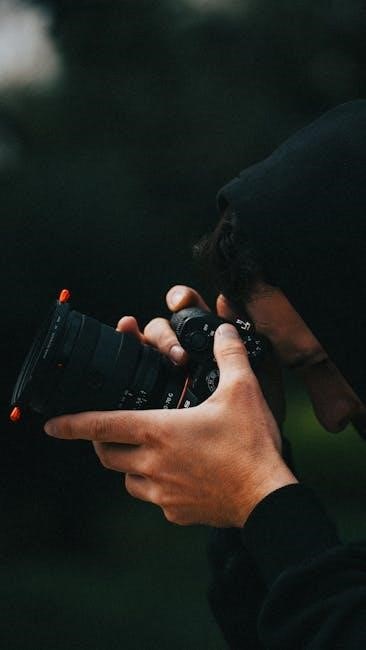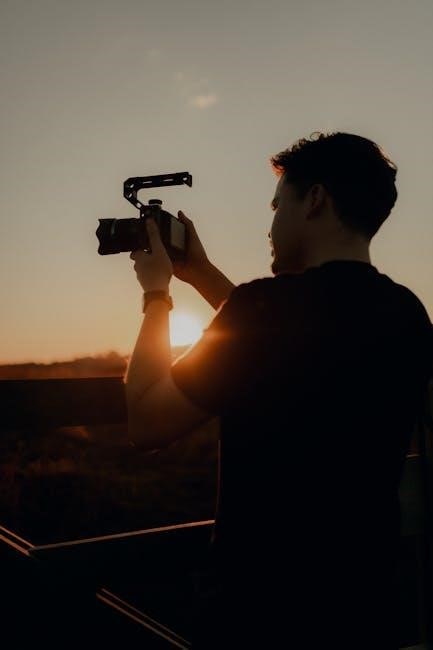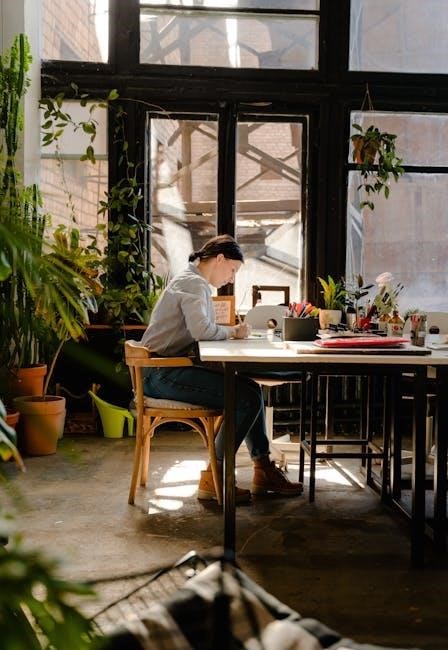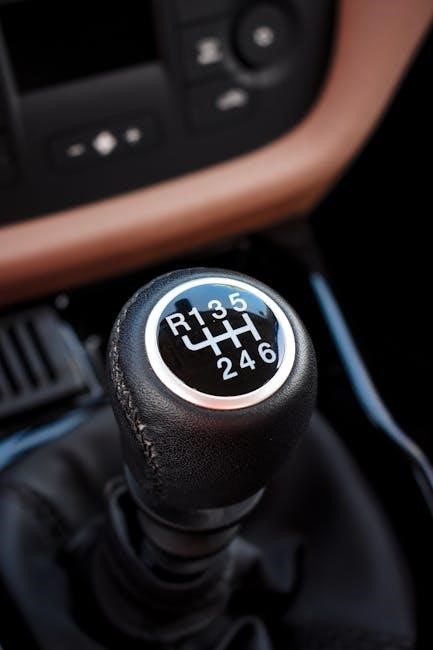The Stokke Tripp Trapp instruction manual provides a comprehensive guide to assembling, using, and maintaining your high chair, ensuring safety and longevity for your child.
Overview of the Stokke Tripp Trapp High Chair
The Stokke Tripp Trapp high chair is a timeless, ergonomic design that has been a staple in homes for decades. Known for its longevity and versatility, it adapts to your child’s growth, serving as a high chair, junior chair, and even a comfortable seat for adults. Crafted from durable, high-quality materials, it is built to last, making it a worthwhile investment for families. Its sleek, minimalist aesthetic blends seamlessly into any home decor, while its functional design ensures comfort and support for children from infancy through adolescence. This iconic chair is more than furniture—it’s a piece of family history.
Importance of Following the Instruction Manual
Following the Stokke Tripp Trapp instruction manual is essential for ensuring the high chair is assembled and used correctly, guaranteeing safety and durability. Proper assembly prevents instability, while correct usage adheres to safety standards like ASTM F404-21. The manual provides guidance on harness systems, weight limits, and maintenance, extending the chair’s lifespan. Ignoring instructions may lead to accidents or damage, voiding warranties. By following the manual, you ensure your child’s safety and maximize the product’s longevity, making it a worthwhile investment for years of reliable use.
Key Features of the Stokke Tripp Trapp
The Stokke Tripp Trapp is renowned for its adaptability and ergonomic design, growing with your child from infancy to adolescence. Its height-adjustable seat and footrest ensure proper posture and comfort. Crafted from durable, eco-friendly materials, it offers longevity and versatility. The chair’s sleek, timeless design blends seamlessly with home décor. Safety is prioritized with a sturdy construction and optional accessories like the newborn set for younger babies. The Tripp Trapp also meets rigorous safety standards, making it a reliable choice for parents. Its customizable options, such as cushions and trays, enhance functionality and personalization, ensuring it remains a practical and stylish investment for years.
Assembly and Installation
Follow the manual for step-by-step guidance on unpacking, preparing components, and assembling the chair using essential tools to ensure stability and proper installation for safe use.
Unpacking and Preparing the Components
Begin by carefully unpacking all components from the box, ensuring no parts are damaged or missing. Lay out the seat, legs, backrest, and hardware on a flat surface. Organize the pieces according to the manual’s component list for easy identification. Check for any protective packaging that may need to be removed before assembly. Set aside small parts like screws or bolts in a safe place to avoid losing them. Finally, ensure all components are clean and free from debris before starting the assembly process. This step ensures a smooth and efficient setup of your Stokke Tripp Trapp high chair.
Tools Required for Assembly
To assemble the Stokke Tripp Trapp, you will need a few essential tools. An Allen wrench (typically provided with the chair) is necessary for securing bolts and adjusting parts. A screwdriver may also be required for certain components. Ensure all tools are within reach before starting the assembly process. While the chair is designed for easy assembly, having the right tools ready will save time and effort. Always refer to the manual for specific tool recommendations, as some parts may require precise fitting. Proper tools ensure a safe and stable setup for your child.
Step-by-Step Assembly Instructions
Begin by unpacking all components and ensuring no parts are damaged. Attach the legs to the base using the provided screws, aligning them carefully. Next, place the seat onto the frame, securing it with the bolts. Tighten firmly but avoid over-tightening. Attach the backrest by aligning the pre-drilled holes and securing with screws. Install the footrest by sliding it onto the frame and tightening the adjustment knob. Finally, ensure all parts are properly aligned and tightened. Double-check the manual for specific torque settings and refer to diagrams for clarity. Once assembled, test the chair’s stability before use.

Attaching Accessories like the Newborn Set
Attaching accessories like the Stokke Tripp Trapp Newborn Set is straightforward and enhances the chair’s functionality. Begin by aligning the accessory with the chair’s designated attachment points. Secure it firmly using the provided fasteners, ensuring a snug fit. The Newborn Set is designed for infants, offering additional support and comfort. Always follow the manual’s guidance to ensure proper installation. This accessory transforms the high chair into a cozy space for younger babies, promoting safe and comfortable dining experiences. Proper attachment is crucial for stability and safety, so double-check the connections before use.

Safety Features and Precautions
The Stokke Tripp Trapp meets federal safety standards, with a secure harness system, weight limits, and stability checks to ensure your child’s safety during use.
Safety Standards and Certifications
The Stokke Tripp Trapp high chair adheres to rigorous safety standards, ensuring your child’s well-being. It meets federal safety standards referenced in ASTM F404-21, which includes tests for stability, structural integrity, and durability. The chair is certified by recognized bodies such as the Juvenile Products Manufacturers Association (JPMA), guaranteeing compliance with safety regulations. Its design prioritizes non-toxic materials and a sturdy construction to prevent accidents. Regular safety assessments and certifications ensure the Tripp Trapp remains a reliable choice for parents. Always follow the manual’s guidelines to maintain safety and performance.
Proper Use of the Harness System

The harness system on the Stokke Tripp Trapp is designed to ensure your child’s safety and comfort during meals. Always secure your child with the harness, even for short periods. Adjust the straps to fit snugly around your child’s body, ensuring the buckles are securely fastened. Regularly check the harness for proper fit as your child grows. Avoid loosening the straps excessively, as this may compromise stability. Inspect the harness for wear and tear, and replace it if damaged. Proper use of the harness system is essential to prevent accidents and ensure your child’s safety while using the high chair.
Weight and Age Limits for Safe Usage

The Stokke Tripp Trapp high chair is designed for safe use across various age groups, with a maximum weight capacity of 85 pounds (39 kg). It is suitable for children from newborn to approximately 10 years old, depending on their size and development. The newborn set is recommended for infants up to 22 pounds (10 kg), ensuring proper support and safety. Always adhere to these limits to prevent instability or accidents. Regularly checking the chair’s condition and adjusting it according to your child’s growth will help maintain safety and longevity. Following these guidelines ensures your child’s comfort and security at every stage.

Ensuring Stability and Balance
To ensure the Stokke Tripp Trapp remains stable, always assemble it correctly using the provided instructions. The chair’s design features a wide base and low center of gravity to prevent tipping. Place the high chair on a flat, even surface and avoid uneven or soft flooring. Regularly check the chair’s legs and frame for any damage or wear that could affect balance. Additionally, follow the weight and age limits specified in the manual to maintain safety. Proper use of the harness system also plays a role in keeping your child secure and the chair stable during meals or activities.

Usage and Adjustments
The Stokke Tripp Trapp adapts to your child’s growth with easy height and seat adjustments, ensuring comfort and support from infancy through early childhood years seamlessly.

Adjusting the Height of the High Chair
Adjusting the height of the Stokke Tripp Trapp high chair ensures your child is comfortable and at the right level for family meals. To adjust, locate the glide system under the seat and slide it up or down to the desired position. Ensure the footrest is positioned to support your child’s feet, promoting good posture. The chair’s height can be customized to fit various table heights, making it versatile for different settings. Always test the stability after adjusting to ensure safety. This feature allows the chair to grow with your child, providing long-term comfort and convenience for years to come.
Positioning the Seat and Footrest
Proper positioning of the seat and footrest is essential for your child’s comfort and posture. The Stokke Tripp Trapp allows for easy adjustments to accommodate your child’s growth. To position the seat, ensure it is at a height that allows your child to sit with their feet flat on the footrest and knees at a 90-degree angle. The footrest can be adjusted by loosening the knobs and sliding it to the desired height. Always tighten the knobs securely after adjustment. Regularly check the fit as your child grows to ensure optimal support and comfort during meals.

Converting the High Chair into a Junior Chair
Converting the Stokke Tripp Trapp into a junior chair involves removing the high chair components and adjusting the seat and footrest to a lower position. Ensure all bolts are securely tightened for stability. Follow the manual’s step-by-step guide to safely transition the chair for older children, maintaining comfort and proper posture. This feature highlights the chair’s versatility and longevity, making it a worthwhile investment for growing families.
Cleaning and Maintenance During Use
Regular cleaning is essential to maintain the Stokke Tripp Trapp’s hygiene and durability. Use mild detergent and water to wipe down the chair, harness, and accessories. Avoid harsh chemicals or abrasive cleaners, as they may damage the materials. For tough stains, gently scrub with a soft brush before rinsing. Dry thoroughly to prevent moisture buildup. The harness system should be cleaned regularly, especially after spills, to ensure proper function. For odors, mix baking soda and water to create a paste, apply it to affected areas, and rinse after 15 minutes. Establish a cleaning routine to keep the chair safe and comfortable for your child.

Maintenance and Care
Regular cleaning and proper storage ensure the Stokke Tripp Trapp’s longevity. Use mild detergents for cleaning, and store disassembled parts securely to maintain its appearance and functionality.
Cleaning the Stokke Tripp Trapp
Regular cleaning is essential to maintain the Stokke Tripp Trapp’s quality and hygiene. Use a soft, damp cloth to wipe down the chair’s surfaces, paying attention to areas around the harness and seat. For tougher stains, mix mild soap with warm water, but avoid harsh chemicals or abrasive cleaners, as they may damage the finish. Dry the chair thoroughly to prevent water spots. The harness and cushions can be removed and washed separately according to the manufacturer’s instructions. Regular cleaning ensures the chair remains safe and comfortable for your child while preserving its aesthetic appeal and longevity.
Storage Tips for the High Chair
Proper storage of the Stokke Tripp Trapp high chair ensures its longevity and maintains its quality. Disassemble the chair into its main components, such as the seat, backrest, and legs, for compact storage. Clean all parts thoroughly before storing to prevent stains or odors. Use a protective cover to shield the chair from dust and moisture. Store in a dry, cool place away from direct sunlight to avoid fading or warping. For small spaces, consider folding the chair or placing it in a storage bag. Label stored parts for easy reassembly later. Avoid extreme temperatures or humidity to preserve the materials.
Replacing Worn-Out Parts
Regularly inspect the Stokke Tripp Trapp for worn-out parts, such as harness straps or seat cushions, to ensure safety and comfort. Replace any damaged components promptly to maintain the chair’s integrity. Order genuine replacement parts from Stokke or authorized retailers to guarantee compatibility and quality. Follow the manual’s instructions for disassembling and reinstalling parts correctly. Proper replacement prevents potential hazards and extends the chair’s lifespan. Always check for updates or recalls on parts to ensure compliance with safety standards. Regular maintenance and timely replacements are key to providing a secure and durable seating solution for your child.
Extending the Lifespan of the Chair
Regular cleaning and proper storage are key to extending the lifespan of the Stokke Tripp Trapp. Avoid harsh chemicals and abrasive cleaners, as they may damage the wood or plastic components. Store the chair in a dry, cool place when not in use to prevent moisture damage. Inspect the harness and other moving parts periodically for wear and tear, replacing them as needed. By following the manual’s maintenance guidelines, you can ensure the chair remains sturdy and safe for years, adapting to your child’s growth and needs.
Troubleshooting Common Issues
The manual helps resolve issues like wobbling, harness malfunctions, or stains, ensuring the chair remains safe and functional for your child’s comfort and your peace of mind.
Addressing Wobbling or Instability
If your Stokke Tripp Trapp high chair is wobbling, check for uneven floor surfaces or loose assembly. Ensure all screws and bolts are tightened securely, following the manual’s torque specifications. Verify that the chair is placed on a firm, flat surface. If instability persists, inspect the legs for damage or wear. Tightening the leg attachments or replacing worn-out parts may resolve the issue. For persistent problems, consult the instruction manual or contact Stokke customer support for assistance. Proper adjustment and maintenance can restore stability and ensure safe use for your child.
Fixing a Malfunctioning Harness
If the harness on your Stokke Tripp Trapp is malfunctioning, start by checking for loose or improperly routed straps. Ensure all buckles and clips are securely fastened and aligned correctly. Clean the harness with mild detergent to remove any dirt or stains that might affect its functionality. Inspect for wear and tear; if damaged, replace the harness with genuine Stokke parts. For persistent issues, contact Stokke customer support for assistance or repair options. Regular maintenance and proper use will ensure the harness operates safely and effectively for your child.
Removing Stains and Spills
Act quickly to remove spills and stains to prevent them from setting. Blot liquids with a clean cloth to absorb excess moisture. For food residue, mix mild soap with warm water, and gently scrub the area. Avoid harsh chemicals or abrasive cleaners, as they may damage the materials. For tough stains, let the solution sit briefly before wiping clean. Dry thoroughly to prevent water spots. Regular cleaning helps maintain the chair’s appearance and hygiene. Always test a small, inconspicuous area first to ensure cleaning products won’t harm the finish. Proper care ensures the Stokke Tripp Trapp remains safe and stylish for years.
Dealing with Missing or Damaged Parts
If parts are missing or damaged, contact Stokke customer support for replacements. Ensure all components are intact before use to maintain safety. Refer to the manual for part identification and ordering instructions. Avoid using the chair until repairs are made to prevent accidents. Regular inspections can help identify wear early, prolonging the chair’s lifespan. Always use genuine Stokke parts for compatibility and safety. If a part is damaged during assembly, disassemble and recheck the instructions to avoid further issues. Proper care and timely replacements ensure the Tripp Trapp remains a reliable and durable option for your child.
Accessories and Upgrades
The Stokke Tripp Trapp offers versatile accessories like the newborn set, cushion, and tray, enhancing comfort and functionality. Additional upgrades allow customization to suit your child’s needs perfectly.
Stokke Tripp Trapp Newborn Set
The Stokke Tripp Trapp Newborn Set is a thoughtful accessory designed for younger babies, offering additional comfort and support during meals. It is crafted to fit seamlessly with the high chair, providing a snug and secure space for infants. The set includes a soft, padded insert that cradles your baby, ensuring proper posture and comfort. It is easy to clean and maintain, making mealtime less stressful. The newborn set is compatible with the Tripp Trapp’s adjustable features, allowing it to grow with your child. This accessory enhances the versatility of the high chair, making it suitable for babies from birth onward.
Using the Stokke Tripp Trapp Cushion
The Stokke Tripp Trapp cushion is designed to enhance comfort and support for your child during meals. Made from soft, durable materials, it provides extra padding for younger users. To use the cushion, simply place it securely on the seat of the high chair, ensuring it aligns with the harness system for proper positioning. The cushion is easy to clean and maintain, making it a practical addition to the chair. It is especially useful for infants and toddlers who need additional support. Always ensure the cushion is properly fitted to maintain safety and stability while your child is seated.
Installing the Stokke Tripp Trapp Tray
Installing the Stokke Tripp Trapp tray is a straightforward process that enhances mealtime convenience. First, align the tray with the chair’s attachment points, ensuring it clicks securely into place. Tighten the clips or hooks provided to prevent any movement. The tray is designed to fit seamlessly, offering a flat surface for feeding. Once installed, it provides easy access for your child while keeping them comfortable. Regularly check the tray’s stability to ensure safety. Cleaning the tray is simple, as it is detachable and dishwasher-safe. This accessory is a practical addition, making mealtime easier and more enjoyable for both you and your child.
Customizing the Chair with Additional Accessories
Customizing the Stokke Tripp Trapp with additional accessories enhances functionality and style. The newborn set provides support for infants, while cushions offer extra comfort. A detachable tray simplifies mealtime, and optional footrests promote proper posture. Accessories like seat covers and trays can be easily installed, ensuring the chair adapts to your child’s needs. These additions not only personalize the chair but also extend its usability, making it a versatile and long-lasting piece of furniture for your family.





















































































